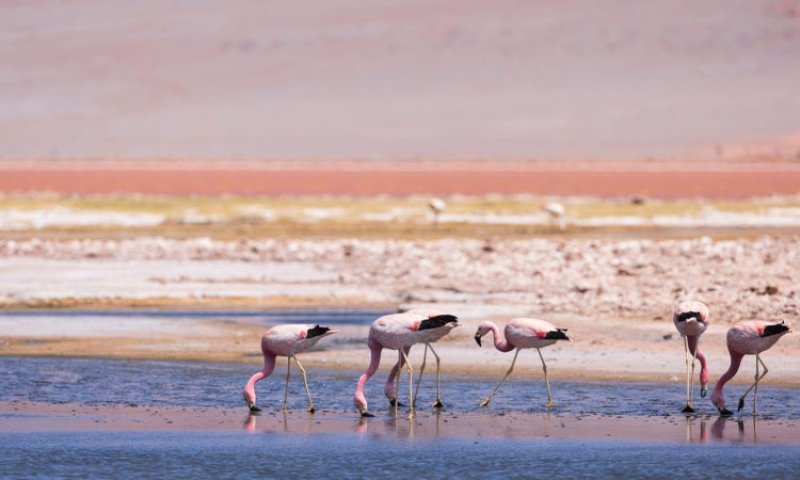
Latest outbreak of deadly bird flu kills 220 flamingos in Argentina

Bird flu is a highly contagious and deadly viral disease that naturally spreads through wild aquatic birds, such as ducks, geese and swans, but can also infect other bird species, such as domestic poultry, according to the US Centers for Disease Control and Prevention.
The H5N1 strain of avian influenza has spread in more than 80 countries since 2022, according to the World Health Organization, and experts have concerns amid its ongoing impact across continents. H5N1 is the predominant version causing problems in the Americas and Europe, and there are several subtypes of the virus reported as the disease continuously mutates, according to WHO.
Around the globe, there have been reports of bird flu outbreaks flaring in various mammals such as seals and farmed mink, detection of H5N1 viruses in domestic cats and dogs, as well as a few cases reported in humans.
Currently, there is no effective treatment for the virus, according to the New York State Wildlife Health Program.
The infected species — known as James’ flamingo (Phoenicoparrus jamesi), or the puna flamingo — is one of three types of flamingos found in northwestern Argentina. The birds pose a risk of spreading the disease to new areas during migration.
Originally, the H5N1 strain spread from North America to South America through migratory birds in a span of three months, according to Dr. Johanna Harvey, a postdoctoral researcher of environmental science and technology at the University of Maryland who has studied the strain.
It only takes one infected bird to pass on the virus to a whole flock in a matter of days, Harvey said, adding that flamingos are known to be highly gregarious, social animals that live in large flock.
The H5N1 strain poses a low risk to humans — since December 2021, 11 cases of the strain have been reported in humans globally, according to the CDC. But experts are closely monitoring the lethal pathogen’s spread to other mammals, such as when more than 50 sea lions were found dead in August in Argentina due to infection of the virus.
My concerns are that it’s in a lot of birds, birds are clearly continuing to move it, and it’s not going away … and as these mortalities pile up, the impact on populations, and potentially even (entire) species, is really great,” Harvey said. “The true magnitude of loss here, I do not believe is well understood and has not been documented, because it’s a really hard thing to do.”
In this latest outbreak, the provincial director of biodiversity for Catamarca, Anabella Ahumada, confirmed the cause of death of hundreds of flamingos to local media, following positive test results for H5N1 in 3 out of 6 samples taken from the dead birds by SENASA, Argentina’s National Food Safety and Quality Service.
Park rangers detected the high rates of mortality in the birds near the bodies of water Laguna Grande and Laguna Diamante, Ahumada told local media outlet Catamarca 12. The province has been under epidemiological surveillance since the start of November, Catamarca 12 reported.
The Argentine government has recommended that people do not come into contact with sick or deceased birds without adequate protection.
Across the United States, zoos have been moving their captive birds indoors as the rate of infection continues to rise. In 2022, the Pittsburgh Zoo, the Denver Zoo, the Maryland Zoo and other facilities moved their bird species indoors away from people and other wildlife. Last month, the Dallas Zoo moved its flamingos indoors, NBC 5 in the Dallas-Fort Worth metro area reported.
The virus has spread through saliva, mucus and feces from infected birds, according to the CDC. In mammals, some scavenging species have come in contact with the virus by eating infected bird carcasses, Harvey said.
“As far as people interacting with wild birds, there doesn’t seem to be a huge risk to them, because the number of human cases have remained low globally, so we’re not too worried about that,” said Dr. Krysten Schuler, an assistant research professor in the department of public and ecosystem health at Cornell University’s College of Veterinary Medicine in Ithaca, New York. “But the mutation potential and the wide distribution of this virus are the major risk factors.”
James’ flamingo is listed as “near threatened” on the International Union for Conservation of Nature’s Red List of Threatened Species, Schuler noted. The main threats to the bird include habitat loss caused by mining, as well as human disturbances due to recreational activities, according to IUCN. When the virus affects birds that are already struggling population-wise, it can have the potential to eliminate species, Schuler said.
There is not much that can be done to stop the spread of the virus, but Schuler recommends that people report any unusual animal deaths without an obvious cause to their state wildlife agencies, so they can be notified of what areas the disease is spreading.
“If there is any potential to do something about it, our best option is right at the beginning,” Schuler said. Source: CNN


